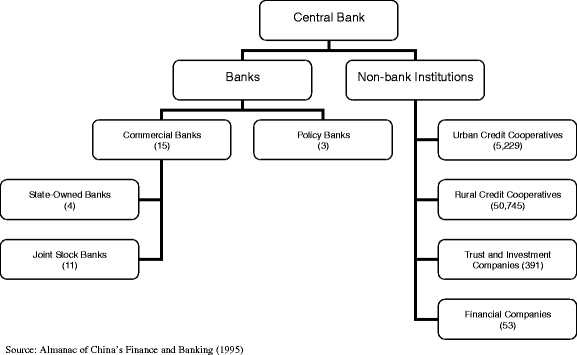What are Nonbank Financial Institutions?
Types of Nonbank Financial Institutions
There are various types of nonbank financial institutions, each specializing in different areas of finance. Some common types include:
- Insurance Companies: These institutions offer various types of insurance policies, such as life insurance, health insurance, and property insurance. They help individuals and businesses manage risks and provide financial protection.
- Investment Banks: Investment banks assist companies in raising capital through issuing stocks and bonds. They also provide advisory services for mergers and acquisitions, underwriting securities, and facilitating trading in the financial markets.
- Hedge Funds: Hedge funds are investment funds that pool capital from accredited investors and use various investment strategies to generate high returns. They often invest in alternative assets and employ complex trading techniques.
- Private Equity Firms: Private equity firms invest in privately held companies and aim to generate substantial returns by improving their operations and selling them at a profit. They provide capital and expertise to help businesses grow and expand.
- Finance Companies: Finance companies offer loans and credit to individuals and businesses. They specialize in providing consumer financing, auto loans, equipment leasing, and other types of lending services.
- Asset Management Companies: Asset management companies manage investment portfolios on behalf of individuals, institutions, and governments. They invest in various asset classes, such as stocks, bonds, real estate, and commodities, to achieve the clients’ financial goals.
Services Provided by Nonbank Financial Institutions
Nonbank financial institutions offer a wide range of services, including:
- Financial intermediation: They act as intermediaries between savers and borrowers, facilitating the flow of funds in the economy.
- Investment management: They provide professional investment management services to individuals and institutions, helping them grow their wealth.
- Insurance coverage: They offer insurance policies to individuals and businesses, protecting them against various risks.
- Capital raising: They assist companies in raising capital through issuing stocks, bonds, and other financial instruments.
- Financial advisory: They provide advisory services on mergers and acquisitions, corporate finance, and investment strategies.
- Credit provision: They offer loans and credit facilities to individuals and businesses, helping them finance their activities and investments.
Overall, nonbank financial institutions play a vital role in the financial system by providing diverse financial services, promoting economic growth, and contributing to the stability of the economy.
What do Nonbank Financial Institutions do?
Nonbank financial institutions offer various financial services, including lending, investment management, insurance, and payment processing. They serve as intermediaries between savers and borrowers, providing access to capital for individuals and businesses that may not meet the strict criteria of traditional banks.
One of the key functions of nonbank financial institutions is to provide liquidity to the financial markets. They facilitate the flow of funds by offering short-term loans, buying and selling securities, and engaging in other financial activities. This helps to ensure the smooth functioning of the overall financial system.
Why are Nonbank Financial Institutions important?
Nonbank financial institutions play a critical role in promoting financial inclusion and fostering economic growth. They provide access to financial services to individuals and businesses that may have limited or no access to traditional banking services. This helps to promote entrepreneurship, investment, and overall economic development.
Moreover, nonbank financial institutions contribute to financial stability by diversifying the sources of funding and reducing reliance on traditional banks. This can help to mitigate systemic risks and prevent financial crises. Additionally, their innovative and flexible nature allows them to adapt quickly to changing market conditions and provide tailored financial solutions.
Challenges and Risks
While nonbank financial institutions offer many benefits, they also pose certain challenges and risks. One of the main concerns is the potential for regulatory arbitrage, where these institutions exploit regulatory loopholes to engage in risky activities. This can lead to financial instability and pose a threat to the overall financial system.
Furthermore, the lack of regulatory oversight can make it difficult to monitor and assess the financial health of nonbank financial institutions. This increases the risk of fraud, misconduct, and other unethical practices. Therefore, it is crucial for regulators to strike a balance between promoting innovation and ensuring the stability and integrity of the financial system.
- Overall, nonbank financial institutions play a vital role in the financial system by providing diverse financial services and promoting financial inclusion.
- They help to ensure the smooth functioning of the financial markets and contribute to economic growth.
- However, regulatory challenges and risks need to be addressed to maintain financial stability and protect consumers.
The Importance of Nonbank Financial Institutions in Corporate Finance
Nonbank financial institutions play a crucial role in the world of corporate finance. While traditional banks are the primary source of financing for businesses, nonbank financial institutions provide alternative funding options and contribute to the overall stability and efficiency of the financial system.
1. Diversification of Funding Sources
One of the key benefits of nonbank financial institutions is their ability to diversify the sources of funding available to businesses. By offering different types of financing, such as asset-based lending, factoring, or mezzanine financing, these institutions provide businesses with additional options beyond traditional bank loans.
This diversification is particularly important for small and medium-sized enterprises (SMEs) that may have limited access to bank financing due to their size or lack of collateral. Nonbank financial institutions can fill this gap by providing flexible and tailored financing solutions that meet the specific needs of SMEs.
2. Enhancing Financial Stability
Nonbank financial institutions also contribute to the overall stability of the financial system. By providing alternative funding sources, they reduce the reliance on traditional banks, which can help prevent systemic risks and financial crises. This diversification of funding sources ensures that businesses have access to financing even during periods of economic downturn or when banks tighten their lending standards.
Furthermore, nonbank financial institutions often have expertise in specific sectors or industries, allowing them to better assess the risks associated with lending to businesses in those sectors. This specialized knowledge helps mitigate risks and enhances the overall stability of the financial system.
3. Promoting Financial Innovation
This ability to innovate promotes competition in the financial sector and drives the development of new financing options. For example, nonbank financial institutions have played a significant role in the growth of peer-to-peer lending platforms, which connect borrowers directly with investors, bypassing traditional banks.
Overall, nonbank financial institutions are essential players in corporate finance, providing businesses with alternative funding options, enhancing financial stability, and promoting financial innovation. Their presence in the financial system ensures that businesses have access to diverse and tailored financing solutions, contributing to the growth and success of the corporate sector.
Types of Nonbank Financial Institutions and Their Services
Nonbank financial institutions play a crucial role in the global financial system by providing a wide range of financial services. These institutions are not traditional banks but offer similar services and products. Here are some of the most common types of nonbank financial institutions and the services they provide:
1. Insurance Companies:
Insurance companies are one of the largest nonbank financial institutions. They offer various types of insurance policies, including life insurance, health insurance, property insurance, and liability insurance. Insurance companies help individuals and businesses manage risks by providing financial protection against potential losses.
2. Investment Banks:
Investment banks are financial institutions that provide a range of services to corporations and governments. They assist in raising capital through underwriting and issuing securities, such as stocks and bonds. Investment banks also offer advisory services for mergers and acquisitions, corporate restructuring, and other financial transactions.
3. Hedge Funds:
4. Pension Funds:
Pension funds are investment funds that manage retirement savings on behalf of employees. These funds receive contributions from both employees and employers and invest the funds in various financial instruments, such as stocks, bonds, and real estate. Pension funds aim to generate returns that can sustain pension payments to retirees over the long term.
5. Credit Unions:
6. Finance Companies:
Finance companies specialize in providing loans and credit to individuals and businesses. They offer various types of loans, including auto loans, personal loans, and business loans. Finance companies may also provide leasing and factoring services. These institutions play a crucial role in providing access to credit for individuals and businesses that may not qualify for traditional bank loans.
These are just a few examples of nonbank financial institutions and the services they offer. The financial landscape is constantly evolving, and new types of nonbank financial institutions continue to emerge, providing innovative solutions to meet the changing needs of individuals and businesses.
Regulation and Oversight of Nonbank Financial Institutions

Nonbank financial institutions play a crucial role in the financial system, providing a wide range of services and products to individuals and businesses. However, due to their nature and potential risks, these institutions are subject to regulation and oversight by various regulatory bodies.
Regulatory Bodies
Other regulatory bodies that oversee nonbank financial institutions include the Securities and Exchange Commission (SEC), which regulates investment banks and securities firms, and the Consumer Financial Protection Bureau (CFPB), which focuses on consumer protection in the financial industry.
Regulatory Framework
The regulatory framework for nonbank financial institutions aims to ensure the stability and integrity of the financial system, protect consumers, and mitigate systemic risks. This framework includes a combination of prudential regulations, conduct regulations, and disclosure requirements.
Prudential regulations focus on the financial soundness and stability of nonbank financial institutions. These regulations typically include capital adequacy requirements, liquidity requirements, and risk management guidelines. By imposing these regulations, regulators aim to prevent excessive risk-taking and ensure that nonbank financial institutions have sufficient financial resources to withstand economic shocks.
Conduct regulations, on the other hand, aim to protect consumers and promote fair and transparent practices in the financial industry. These regulations may cover areas such as consumer lending, mortgage lending, and insurance sales. They often include requirements for fair disclosure of terms and conditions, prohibition of unfair practices, and mechanisms for resolving consumer complaints.
Disclosure requirements are another important aspect of the regulatory framework for nonbank financial institutions. These requirements mandate that nonbank financial institutions provide accurate and timely information to regulators, investors, and consumers. This information includes financial statements, risk disclosures, and other relevant information that allows stakeholders to make informed decisions.
Challenges and Future Developments

Regulating nonbank financial institutions is a complex task due to the diverse nature of these institutions and the rapidly evolving financial landscape. One of the challenges is to strike the right balance between promoting innovation and ensuring financial stability. Regulators need to be proactive in identifying emerging risks and adapting regulations accordingly.
Another challenge is the coordination and cooperation among different regulatory bodies. Nonbank financial institutions often operate across multiple jurisdictions, making it necessary for regulators to collaborate and share information effectively. International cooperation is also crucial to address cross-border risks and harmonize regulatory standards.
Looking ahead, the regulation and oversight of nonbank financial institutions will continue to evolve as new technologies and business models emerge. Regulators will need to stay vigilant and adapt their approaches to effectively address the risks and challenges posed by these institutions.
| Regulatory Bodies | Regulatory Framework | Challenges and Future Developments |
|---|---|---|
| Financial Stability Oversight Council (FSOC) | Prudential regulations | Striking the right balance between innovation and stability |
| Securities and Exchange Commission (SEC) | Conduct regulations | Coordination and cooperation among regulatory bodies |
| Consumer Financial Protection Bureau (CFPB) | Disclosure requirements | Adapting regulations to new technologies and business models |

Emily Bibb simplifies finance through bestselling books and articles, bridging complex concepts for everyday understanding. Engaging audiences via social media, she shares insights for financial success. Active in seminars and philanthropy, Bibb aims to create a more financially informed society, driven by her passion for empowering others.
